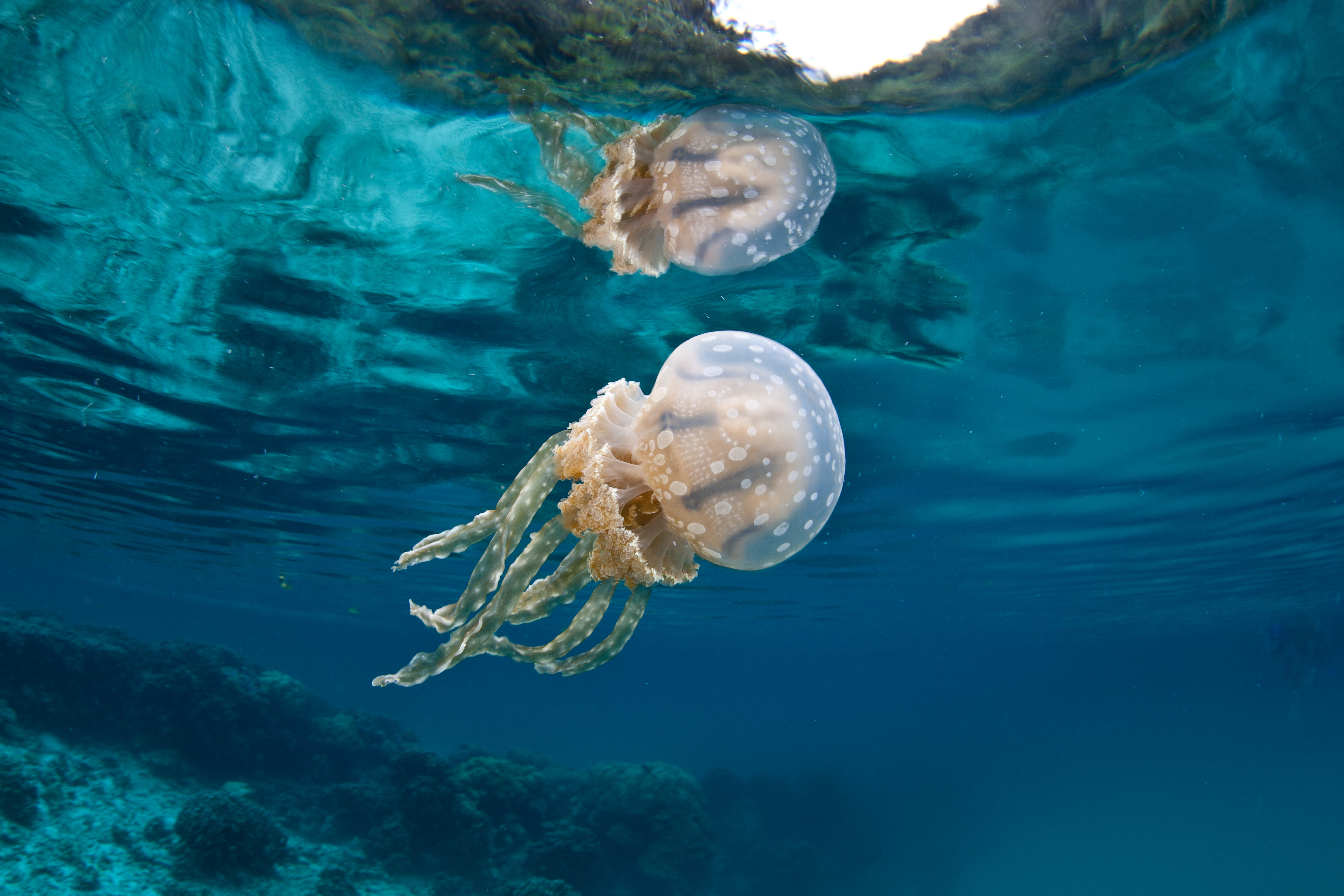Jellyfish Stingers Treatment And Prevention
Posted by ecostinger on 14th Aug 2014
EcoStinger Full Body Swimsuits provide protection against box jellyfish stingers, sea lice and other sea creatures.
How to treat and prevent Jellyfish stingers attack
About Jellyfish Stingers
Jellyfish or Jellies as they are sometimes called are not categorised as fish, they have no head, brain, eyes or ears. They are free-swimming sea animals that have a bell shape body with oral or feeding arms, and tentacles. They are named jellyfish due to their gelatin-feel bodies. Jellyfish are generally transparent or translucent (example box jellyfish stingers), and can be found in shallow to deep waters of all the world oceans. Jellyfish are also found in fresh water; however these do not normally sting. It is believed that the creatures have been roaming the earth for over five million years up to now. The possibility that they have invaded the coastal areas of the world for over seven hundred million years cannot be overlooked as well. They are easily referred to as the oldest multi-organ animals.
How Jellyfish stings work
Although Jellyfish do not have brains but they do have a nervous system
which spreads through the body; when the tentacles come in contact
with an external object or a prey the cells of the nervous system
reacts by releasing the stinging cells contained in the tentacles into
whatever they are in contact with such as fish or human skin, causing
severe pain and paralysis its prey. Jellyfish stings can be venomous
and lethal to humans in some cases.
The jellyfish stingers often sting a person using nematocysts. It can
also be referred to as cnidocysts scientifically. Scientists have proven
that a normal contact with the creature can lead to millions of
nematocysts piercing the skin of the person. This is what leads to the
instilling of the venom from it. It is however proven that only some
venom from some species can be extremely dangerous to human beings.
Immediately a nematocyst is triggered as a result of the presence of a
person or predator there is creation of pressure. This pressure quickly
builds up inside it to around 2000 pounds per square inch. There is
nothing to prevent its consequent bursting in this case. The pressure
in this case is after all very high. Inside the nematocyst a lance is
the one that pierces the skin of that person involved. The poison
inserted then flows rapidly in the blood circulatory system of the
victim. It is very uncomfortable for anyone to touch or even get in
contact with a jellyfish stinger. This is why medical assistance may
be the only way out when such a thing occurs to you unfortunately.
Treatment
The effects to the skin range from a small one to extreme pain and even
sometimes death. You should be aware of even dying jellyfish stingers
as they have the capacity to still sting. You should seek medical
treatment immediately when you are faced with such a situation although
most of them are not fatal. You should rinse off the tentacle of the
creatures immediately with hot water. You can also use salty water if
the hot one is not available. You should then use a glove to remove any
remaining tentacles. Take care since using bare hands leads to more
stings. You should then apply regular household vinegar or insert your
stung area in hot water. It should be about over 122 F degrees (50 C
degree) if you are going to get desired results. Be careful not to
scald. You can then use various drugs to ease the pain. Expect mild
itches anyway. Jellyfish stingers should be avoided if you can.
Prevention
The best prevention option is to avoid contact with jellyfish stingers;
if this is not possible, wearing special swimming costumes called
stinger swim suits, originated in Australia and now popular amongst surfers
and divers in shallow waters all over the world, remain the best
effective solution. These suits fit like second skin and can help
protect your skin against most jellyfish stings. They are light
weight, thin, and comfortable to wear. Also wearing special hood
balaclava, gloves and socks can help provide total skin protection.

